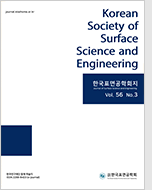
- Past Issues
- e-Submission
-

2021 Impact Factor 1.766
5-Year Impact Factor 1.674
Editorial Office
- +82-2-563-0935
- +82-2-558-2230
- submission@kssse.or.kr
- https://www.kssse.or.kr/

2021 Impact Factor 1.766
5-Year Impact Factor 1.674
The Korean Society of Surface Science and Engineering 2024;57(2):71-85. Published online: May, 16, 2024
DOI : 10.5695/JSSE.2024.57.2.71
This article provides an overview of Raman spectroscopy and its practical applications for surface analysis of semiconductor processes including real-time monitoring. Raman spectroscopy is a technique that uses the inelastic scattering of light to provide information on molecular structure and vibrations. Since its inception in 1928, Raman spectroscopy has undergone continuous development, and with the advent of SERS(Surface Enhanced Raman Spectroscopy), TERS(Tip Enhanced Raman Spectroscopy), and confocal Raman spectroscopy, it has proven to be highly advantageous in nano-scale analysis due to its high resolution, high sensitivity, and non-destructive nature. In the field of semiconductor processing, Raman spectroscopy is particularly useful for substrate stress and interface characterization, quality analysis of thin films, elucidation of etching process mechanisms, and detection of residues.
Keywords Raman Spectroscopy; Semiconductor Processing; Surface analysis; In-situ monitoring.